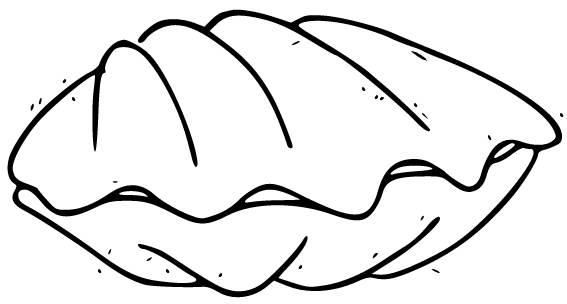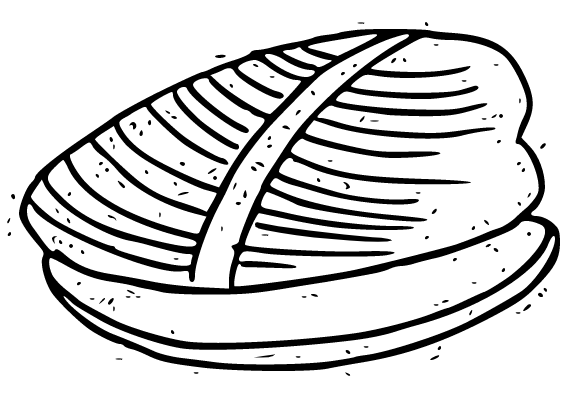-

-
The Discerning Mollusk's Guide to Arts & Ideas
-


eople have been adding smells to literature for years, but it wasn’t until 2022 that the trend really took hold. All the big books published that year—Cordelia’s Hat, Nice/Not Nice, Kalamazoo, Salad Apostrophe—were sold in “aromatic editions” that featured “smellpoints” at which, upon a page turn or retinal reading confirmation, a relevant smell would be emitted via tiny wires running through the pages and connecting back to a proprietary chemical cartridge system in the book’s spine. In the climactic scene of Apostrophe, for example, the anti-anti heroine Moire DeNaught holds up her salad in defiance and shouts, “Make mine a Caesar!” When those words were read in the aromatic edition, a chemical spritz made the air above the page smell like a Caesar Salad.
While the technology was expensive and time-consuming—it involved the installation of hundreds of miniature pex tubes, a power source (usually solar), and a governing computer that managed the reading sensors and dispersion of chemicals— aromatic literature, or “smelly books,” completely revitalized the industry. Thirty-five percent of books sold across the world that year were smelly. The annual Bookies even created a new category to recognize them: Bix Dalv’s Forever Breakfast won the first-ever Bookie for Best Aromatic Literature of 2022.
It wasn’t long before literary journals got in on the craze, too. In February 2023, The Worcester Review included one aromatic poem, L. D. Forest’s “Ocean Avenue,” in their spring issue. Guffaw followed in April with a smell-forward essay called “A Meditation on Traffic,” by Rose Mustang. Soon, every journal worth the smell of salt was adding scents to their pages.
Exacting Clam began making plans to publish their first smelly issue in the winter of 2024. I was in the editorial suite when Smell the Words™, a local literary aromatic installer, pitched us for the bid to aromatize the next issue. The husband-and-wife team seemed knowledgeable and personable, but I was appalled at the figures they quoted us. Ten thousand dollars to run the lines? Eight K more for the chemicals? Halfway through the pitch I leaned over to Emily Why, another editor at Clam, and said, “Couldn’t we do this ourselves?”
“Which part?” she hissed.
“All this stuff’s available online. You run a power source, connect your lines to the smell spots, and voila!”
“I don’t know,” Why whispered. “Seems pretty complicated to me.”
When I pitched this idea to the full editorial board, others were skeptical as well. “There’s a lot involved here, Boucher,” said Mar Doyle, leaning over the table. “What do you know about installing a power source?”
“I’m pretty sure it’s just a basic solar generator,” I said.
“But what about the scents themselves?” said my colleague Sigh from across the room.
“Can’t we just buy a basic aroma package and mix any smells we don’t have?”
Sigh looked to Why, who shrugged.
“And you’d oversee this?” said Doyle.
“Absolutely,” I said. “I’ll take care of the whole thing.”
The board gave me the go-ahead and I got to work. Issue 13 was particularly smell-heavy – what with the odors of socks in the review “Into the Good World Again,” wood-paneled walls and a jar of roses in “Mountain Spirit,” and gargantuan frogs, darkness and octopi (not to mention a whale!) in “Breath-taking”—so I began by making a comprehensive list of smells and extensive notes about how I’d achieve each. Some bouquets were straightforward, but for others I had to draw on everything I’d ever known about odor and language. I created the smell of ennui by mixing the essence of filing cabinets with the scent of crumbling sidewalks. For worry I went with pongs of perspiration, one part electricity, and the waft of something spoiled. To create the “inverse relationship between proximity and access” I mixed two cups’ silence, the fragrance of longing and the whiff an of an open field.
I ran into plenty of challenges, though. Have you ever tried running mini-pex wires through an entire issue of a literary journal? It’s not as easy it sounds; I bungled four of my first five connections, and kept confusing one line with another. When we held a full-issue smell-through later that month, the odor of old t-shirts in “n+1 and other modes” was overwhelming—while none of the smells in “Smog Mammoth” worked at all! I’d mistakenly reversed the smells of a butterfly and sorrows in “Into the Good World Again,” and then it turned out that Why had a sensitivity to the honeysuckle odor in “Mountain Spirit”—a sensitivity she’d informed us of repeatedly, she reminded us before storming off the page. As she did so, the entire system suddenly lost power. I was resetting the computer when I felt a hand on my shoulder and turned around to see Sigh standing behind me with a grim expression on his face. “This just isn’t working, Chris,” he said.
“I’ll have the power back on in five,” I said, “and then I just need to recrimp these connections—”
“No,” said Becker. “We’re going to have to go a different way here.”
That afternoon, the editors held an emergency meeting at which they decided to remove me from the project and reach out to Smell the Books™ to inquire about salvaging the issue. But STB was booked through August, and they wouldn’t sign on unless we paid extra to remove everything I’d done and re-aromatize from scratch. Given our sunk costs and the threat of a six-month production delay, the editors decided to publish Issue 13 without smells.
Looking back, though, that was probably for the best. Not long afterwards, smelly books began to fade in popularity. That fall, in fact, a backlash (#mybooksdontsmell) began online and sales of aromatic editions fell considerably. Nowadays, you hardly ever see a smelly book anymore.
But you know what? I think literature already has a smell. Here—lean down to the page and take a whiff. Go ahead—breathe it in. See? Doesn’t the language already pong of old roses and trying; the spine of glue and sorrow; the page itself of proximity, hope and tomorrow?

Christopher Boucher is Exacting Clam's Contributing Metaclamician. He is the author of the novels How to Keep Your Volkswagen Alive (Melville House, 2011), Golden Delicious (MH, 2016), and Big Giant Floating Head (MH, 2019). He teaches writing and literature at Boston College and is Managing Editor of Post Road Magazine.